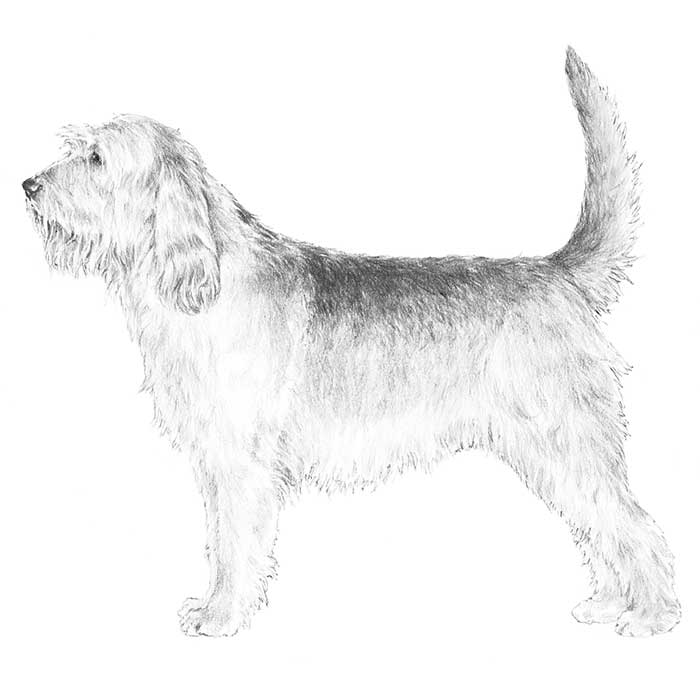
The Otterhound, a scent hound, is unique among hounds because of his rough, double coat and substantial webbed feet. He uses these features to hunt on both land and water. With his large, strong body and inquisitive nose, the Otterhound is willing to work all day. The coat may be any color or combination of colors.
- The earliest references to otter hunting in England are in the time of King John, who reigned in England from 1199 to 1216. The earliest clear reference to a rough-coated hound used in otter hunting similar to the current breed was a “grizzled … shag-haired” hound documented in 1611.
- The modern Otterhound evolved from the early rough-coated Welsh Hound of 1700s and crosses with various French rough coated hounds and the Bloodhound in the 1800s.
- The hunting of the otter never was a so-called major sport in England, but it appears to have existed from very early times. It was first practiced because the otters were preying on the fish in the rivers and streams to an annoying extent.
- Later it enjoyed a considerable vogue because it was the only kind of hunting possible from April to September.
- The origin of the Otterhound is shrouded in mystery, but the earliest writers advance a number of logical opinions as to its origin. The French Origin of the Otterhound appears to be one of the most reasonable.
- The opinion of one such writer, Marples, states it is almost the exact duplicate of the Vendýe hound of France. The two breeds are alike in both coat and body formation.
- The Otterhound is a big dog with a hard, crisp and close coat, oily in nature that can withstand any amount of immersion in water.
- The breed ranges through many shades to black and tan. It is a peer among swimmers, its progress through the water being aided greatly by its webbed feet.
- Otterhounds first made their appearance in the United States about the year 1900. They made their bench-show debut in 1907 in Claremont, Oklahoma, and registrations were recorded.
- While the Otterhound never has grown to wide popularity in the United States, what it lacks in smartness of appearance is compensated by its working qualities and unfailing devotion to its master.
The above text and image © 2017 American Kennel Club.
